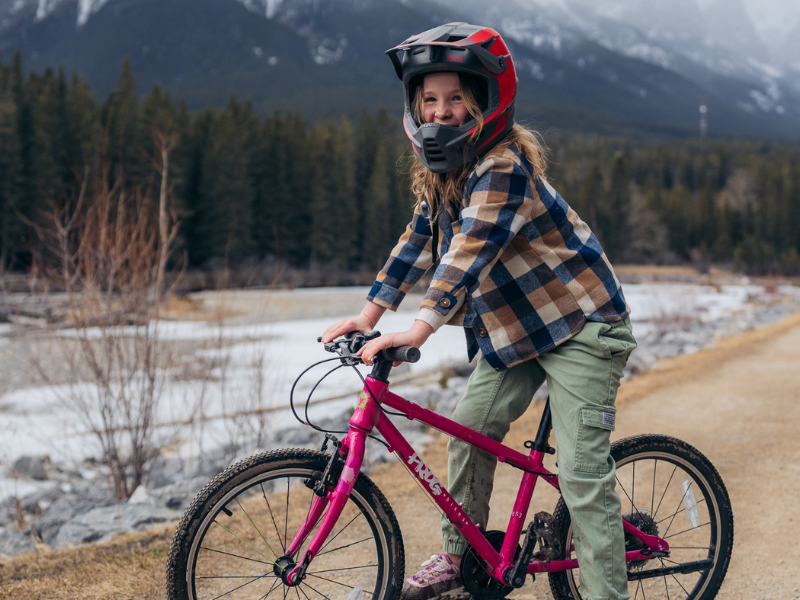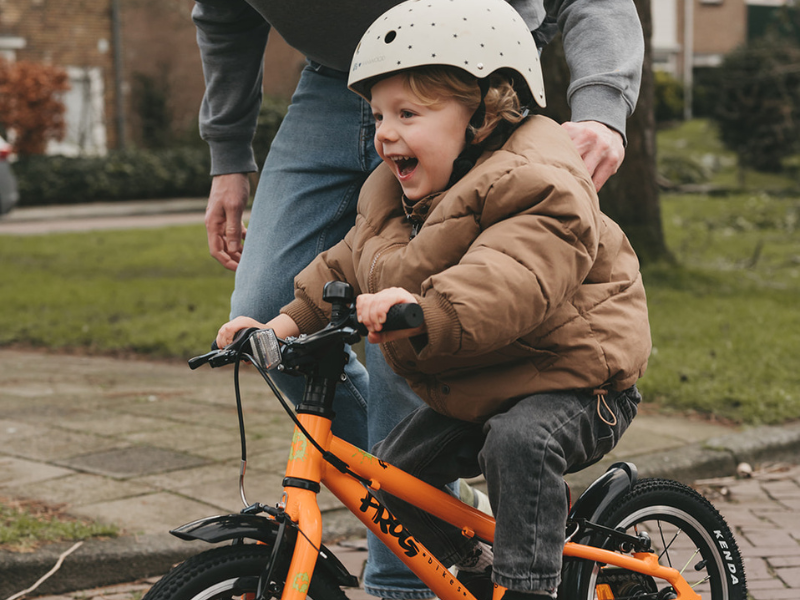How to explain bike gears to a child
- 7 May 2021

Explaining Gears to Children
7 May 2021 - Learning to Ride
How to explain bike gears to a child
With your child now a master of bike handling and balance, the next step forward is to teach them about bike gears. Having this knowledge will help them to maintain a comfortable speed whilst pedalling, depending on the terrain and gradient.
Having bike gears is not an indication of how fast the bike will go, but about the efficiency of the bike in different situations. Switching gears can make light work of hills, rough terrain and even descents, and knowing when to switch up or down a gear will make cycling for your child much easier.
This is what the experts say:
Tips from Bikeability:
Using the gears on your bicycle makes pedalling easier. The low gears help you pedal up big hills, and the high gears will help you ride back down.
The gear levers on your handlebar change the gear on your bike; the left lever changes your front gears (if you have them), and the right lever changes your rear gears. Most children’s bikes just have rear gears and a right lever to make it easier for them to learn.


- The lowest gear is shown by the number 1, and the highest gear is the highest number you can see. This will be different for different bikes and is normally between 6 and 9 on children's bikes
- Each click of the lever moves the chain into a different gear, but remember to keep pedalling as you change gears!
- Practice changing gears in a quiet place and on a flat surface while slowly pedalling your bike. How does your bike feel when you’re in the lowest gear? Now, try to pedal in your highest gear, and see how that feels!
- Keep practising until you feel confident with changing gears before attempting to cycle up big hills!
- How do you know what gear to use? As a rule of thumb, use your lower gears for going uphill, middle gears for flat paths and playgrounds, and higher gears for going downhill


Tips from The Cycle Coach
Understanding the gears is a core cycling technique.
Developing the skill of changing gear in the right place and at the right time takes time and experience to learn.
For a given speed, spinning the pedals quickly is said to be in a low (easier) gear than a rider who is pedalling more slowly in a high (harder) gear.
Here are a few of our tips for changing gear:
1. Pedal at a rate that best suits you and the terrain - a slightly faster-pedalling rate is best
2. Look ahead at where you are going, not down at the gears
3. Maintain a smooth pedalling technique, releasing pressure slightly on the pedals as you change gear
4. Stay seated
5. Shift through one gear at a time maintaining approximately the same rhythm
Twitter: @the_cyclecoach | Instagram: @thecyclecoach | Facebook: @thecyclecoach


Teaching your child how to change gear:
1. First of all, show your child how to use the shifters and explain you can only change gear when pedalling. Show that changing the gears whilst stationary won’t do anything
2. Then lift the back wheel off the ground, pedal the bike by hand and show them how to change gear
3. If it’s a grip shift teach your child how to twist forward for harder or twist back for easier. On shifters teach them it’s the big thumb for easy and the little finger for hard. (For more information on the difference between grip (twist) and trigger shifters, read the gear section on this blog: Kids Bike Buying Guide
4. Set the bike up in a middle/easy gear and forget about what number gear they’re in, keep watching how they are going, if you think they need a harder or easier gear just say “1 click easy/harder” and so on. This will get them used to changing gears
5. Once they are confident doing this and have been doing it for a while the next step is changing gears to the numbers i.e gear. Explain 1 is a low gear and super easy to get up hills and the highest gear i.e 10 is the hardest to go really fast down or on flat ground
6. Show them the numbers on the shifter. Whilst riding instead of saying easy or hard, start telling them what number to go to - go to number 3, number 4 and so on, and move up or down one gear at a time
7. Good practice is finding a slight slope and showing them they need the easier gears to get up and the harder gears to get down, get them to try different harder gears going up and easier gears down to help them realise what gears they need to be in and how it affects their legs




"Persevere with it, praise them every time they do it, it won’t happen overnight!"
Dylan, Frog Bikes ambassador @cari_liittle_ripper’s Dad
"It's taken me a while to get my head around gears! It's difficult to explain, and also difficult to get your head around when someone's trying to explain it to you! But once you get it; you just do it automatically without thinking about it!
For me, the biggest thing was remembering to shift back into an easier gear BEFORE you stop, hit a steep hill, or just after you've had to brake hard, so always thinking ahead and being prepared, that way you ride much smoother! So get out there and practice! Enjoy!!"
Leon Wilkes, Frog Ambassador
Share it on Social Media:









